Submitted by Leslie Spitzer, Team Easyboot 2012 Member
It’s hard to believe that yet another ride season is wrapping up. It seems like it just started. Also along with the end of ride season another year of participating in Team Easyboot is coming to a close. It was a great year and for me, I feel like my knowledge of hoofcare and booting increased immensely. I feel like I’ve come to a point where I can truly help out others with confidence and share that knowledge all while realizing I am still a student and always will be. There is always something new to learn or something that can be made better.
This was my third year with barefoot/booted horses. I found myself coming into the season still struggling with booting challenges with my main horse, Eagle. I’ve always been fully open about the fact that I consider him to be the worlds most difficult horse to boot due to his extreme movement, power and his hoof shape. I fully believe in the choice I’ve made for him to be barefoot/booted so even though I’ve been tempted, I’ve stuck with the boots always trying to find solutions to make it work better for us.
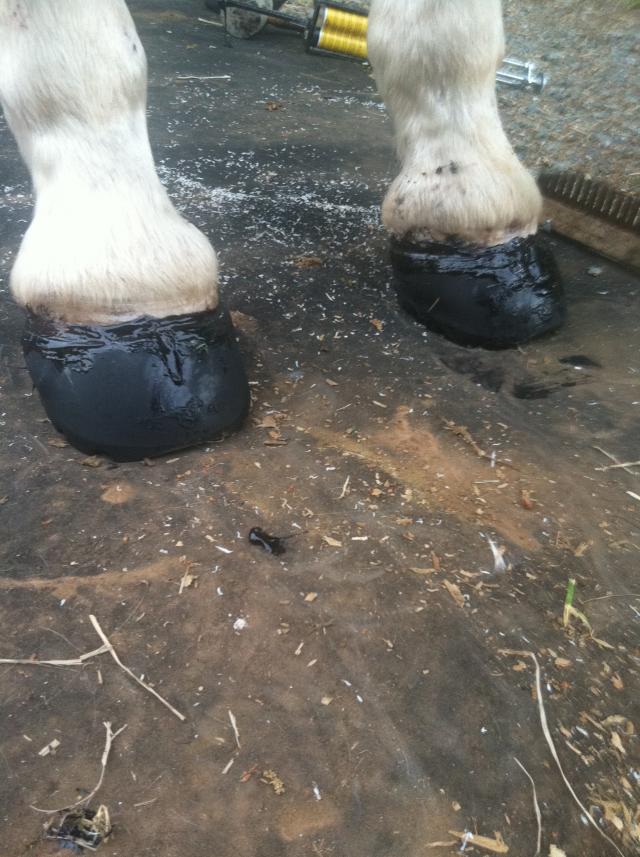
Glue-Ons – our standard boot for endurance rides.
I’ll always prefer Glue-Ons for 100’s but I won’t lie, I was tiring of having to use them for 50’s. I was quite envious of those who could just slap boots on and go and fantasized about how lovely that would be. Stubborn streak in full operation, I decided I was going to work on that problem and try and solve it. First of all, I made sure I was working with a properly trimmed hoof. I then took Mueller Athletic Tape and wrapped it around the hoof 4 times in the front and 5 times in the rear. I applied Sikaflex to the sole of the hoof with a spatula. I then worked and got the boots on and seated correctly. I then took a hoofpick and pried the boot open at the quarters just enough to get a tip from the Adhere gun in there and I squeezed a bit in. I then did a top bead of Adhere around the boot. So, it wasn’t exactly as easy as slapping on a boot and going, but it was easier than gluing shells – kind of a happy medium. I was extremely happy with the result as my boots stayed on.
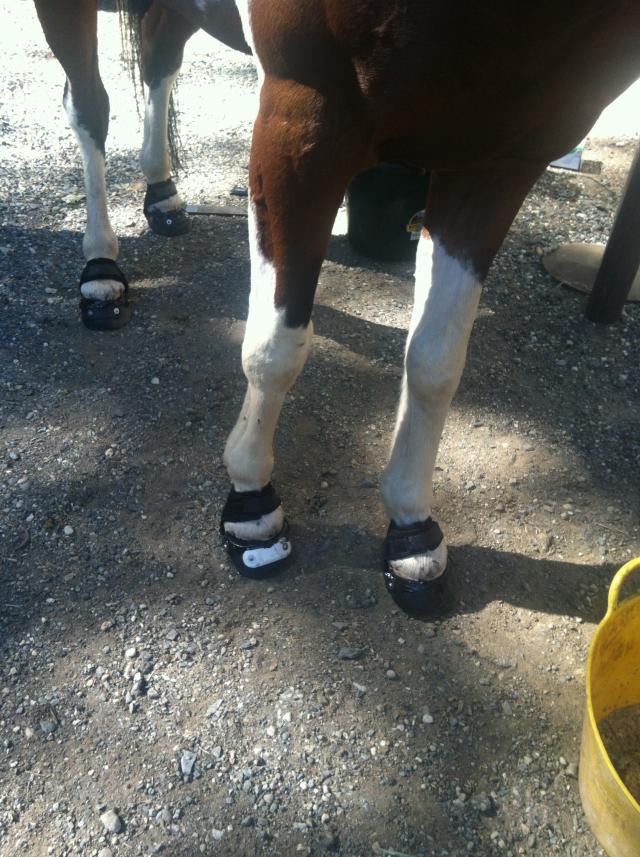
Easyboot Gloves on the evening before the ride. Unfortunately, there were no pics of the process.
At the next ride we went to I decided to go this route again, only I decided to use Glove Back Country Boots in the front and Gloves in the rear. I’d been having pretty good luck with the Back Country in training and I thought it would be fun to see how they did. I wasn’t even sure if anybody else had actually done a 50 mile ride in them. The procedure I used for the fronts and Back Country was just SikaFlex in the sole and 4 wraps of Mueller Athletic Tape. I used Sika on the soles in the rear and 5 wraps of tape. I then quickly realized my half empty tube of Adhere was not mixing properly so I ditched it and just squeezed some Sika in the quarters and did a top bead around the boot. It worked fabulously – no lost boots.
I have to say I am quite impressed with the Glove Back Country boots. I think it is going to be more of an endurance boot than previously thought. It never budged and I am sized up half a size from our normal Glove size. We traveled at all gaits and at competitive speeds. I had not previously used the Back Country in deep footing or lots of sand (both of which there was a lot) so I did wrap some duct tape around the boot to make sure I would not have to worry about sand affecting the velcro. One thing to note, if riding in deep sand, check at the stops for any accumulation in the gaiters we did have some. At home we do not have really deep footing and I’ve never had anything accumulate in them.

Cantering along in our Back Country/Glove combo (Baylor/Gore photo).
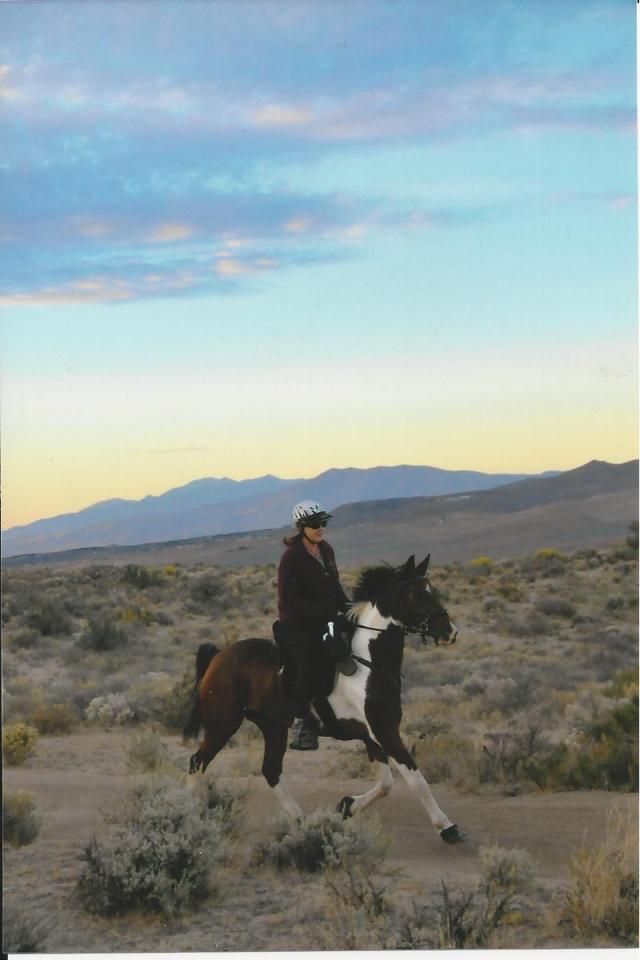
Eagle showing off his big trot in the Back Country/Glove combo. (Baylor/Gore photo)
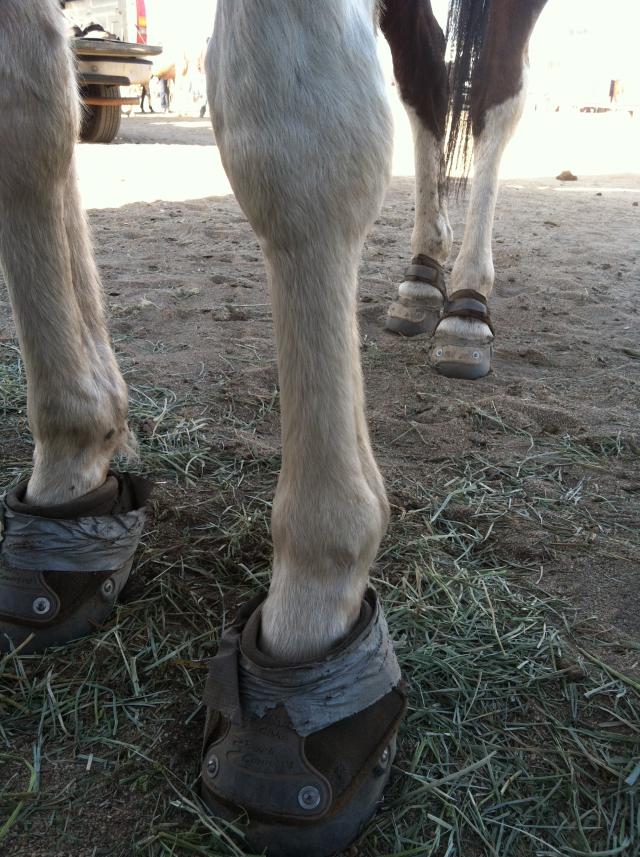
Post ride. The duct tape is a nice touch, don’t you think?
In reflecting back on the year in general, I am pleased to say I am noticing a real paradigm shift to boot usage in my local area. I have traveled to rides in different regions over the past few years and had been really surprised at how many boot users I saw compared to my own area. I don’t know why this was the case, it just was. I can only assume it’s shifting because people cannot ignore the statistics and the successes. It is a very valid option and becoming quite mainstream. I like to think maybe, possibly I have had a small influence in this shift on my local level. I am an advocate of barefoot/booted and I do believe it to be best. My most important lesson has been to approach softly, use few words, lead by example and success and be available to help and answer questions. Plant the seed, nurture it and wow – suddenly people are calling and asking for the help to transition to barefoot/booted.
I’m really excited and proud to say there are quite a few horses transitioning local right now that I’ve had a hand in helping out. It’s a huge responsibility but I credit being a member of Team Easyboot as an excellent resource. I’ve made the connections I need so I can get help or ask a question or opinion on my work.
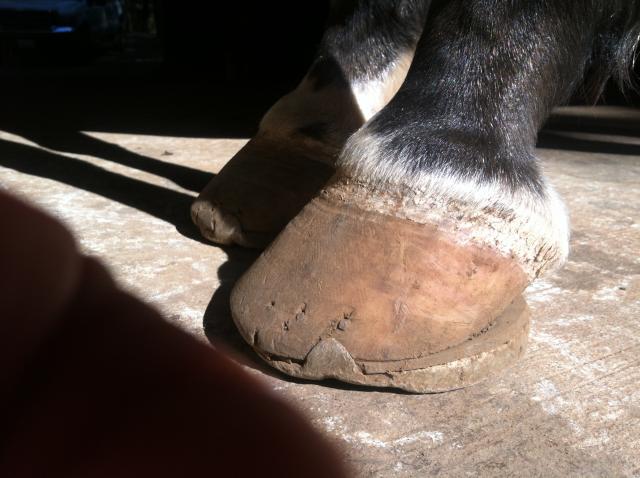
A horse we are helping transition with Navicular Syndrome. This was about 6 weeks ago the day these shoes were pulled.

Same foot six weeks later. He’s got a long way to go but we are seeing some changes.
It’s exciting and fulfilling to me to be helping in change and progress. I don’t know that I’d have the confidence, the knowledge or the feeling of challenging myself to learn more if it were not for my involvement with Team Easyboot and the resources and folks I’ve met through Easycare. I’m thankful for that and I can’t wait to see what’s in store for next year.
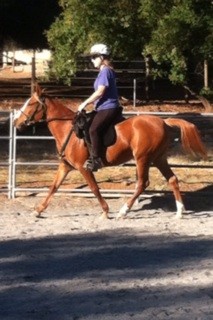
What I am looking forward to next year. This is four year old Finney, my first home-bred, never shod horse.
Leslie Spitzer





